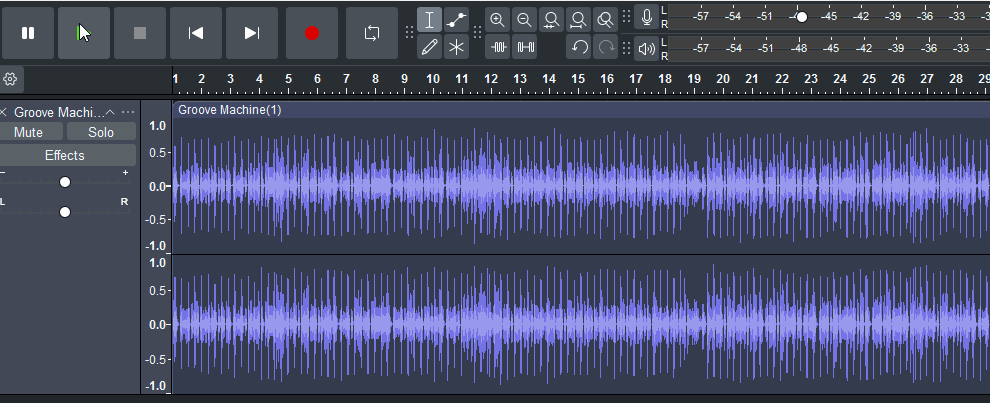I am Returning to Audacity after a few months gap due to other digressions. So I apologize at the outset, if I have not responded/replied to valuable insights posted various courteous expert posters, before posting this one. I am hoping to catch up soon.
Below is a long note, yet I cannot express everything that I can and want to say. For brevity’s sake I will let other thoughts and deliberations to enter the mix through discussions.
Thanks in advance.
br Sri.
Realtime and Non-Realtime effects
1) I do understand the basic nature of Real Time non-destructive and Non-Realtime (holistic, destructive) effects.
For example (and I am taking this example deliberately)
consider a simple/trivial effect.
Volume at any point T in the track is
Vol(T)= function (CurrVolume(T) + Delta)
That is, the new volume is based only on the current volume and not dependent on preceding or succeeding points. We can assume Delta is a constant, a valid and good case.
This computation can be done in real time.
Hence a Realtime Effect.
2) Now let us consider a variation of this, where Delta is a multiplier.
Again not a problem. Let us say Delta is picked by scanning the whole track, ahead of time, and is picked so that no clipping occurs place anywhere on the track. Sounds familiar? – a simple case of Normalize.
(Or for the sake of argument, we could even consider that Delta is a vector of track min, mean, median and max volumes).
Clearly the Vol(T) function needs pre-scanning the whole track for establishing Delta. So, arguably, this is not a true real time effect!
3) Now for normalize we have to use Effects->Normalize.
Which is also destructive, unnecessarily.
4) My point is that
We could still do the Normalize as a non-destructive effect, if Delta is computed as a preprocess (and repeated as needed).
5) Want to discuss the following
a) Please do not ask for why I need this. You can read all my prior posts and see that there were are always valid requirements.
b) I do understand and do not expect others to agree with my requirements. But that is not relevant to this discussion.
c) Also please do not suggest others ways to accomplish this. As this discussion is about how to make more effects real time and non-destructive (by using preprocessing or other ideas, as needed).
d) Please also spare "very few users would needed this and so why we spend time on that". that is not the focus here.
e) This is intended to be a technical discussion about the possibilities, without advocating any priorities for implementation, if at all.
f) I think this may be “dejavu” as the team might have actively discussed these issue while implementing Real Time Non Destructive effects. If there are posts related to these, appreciate your pointing me to them.
Here is one I found, somewhat related to this.
g) Ideally I would like to see all the feasible effects, to become available as non-destructive Realtime effects. Hopefully team is already working on this and is populating the RoadMap.
It is just that Non-Destructive Realtime Normalize is my first priority need of this kind. and so using it for this write-up.
